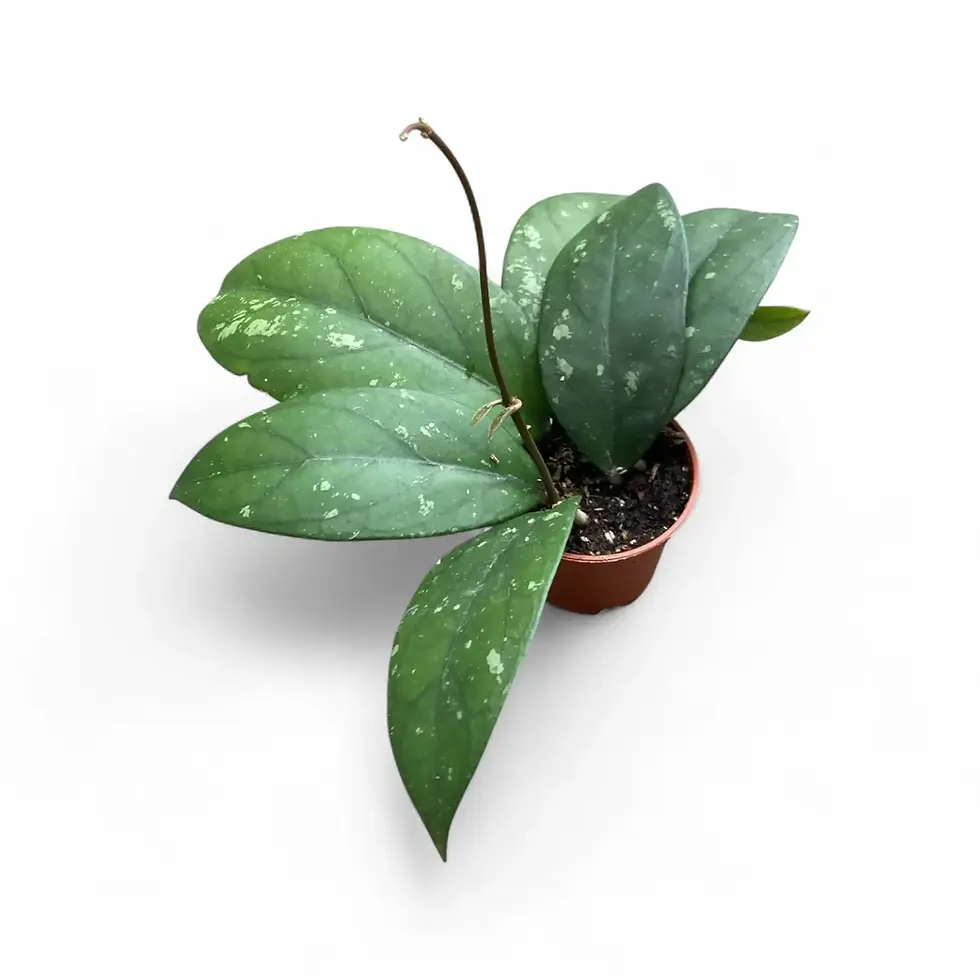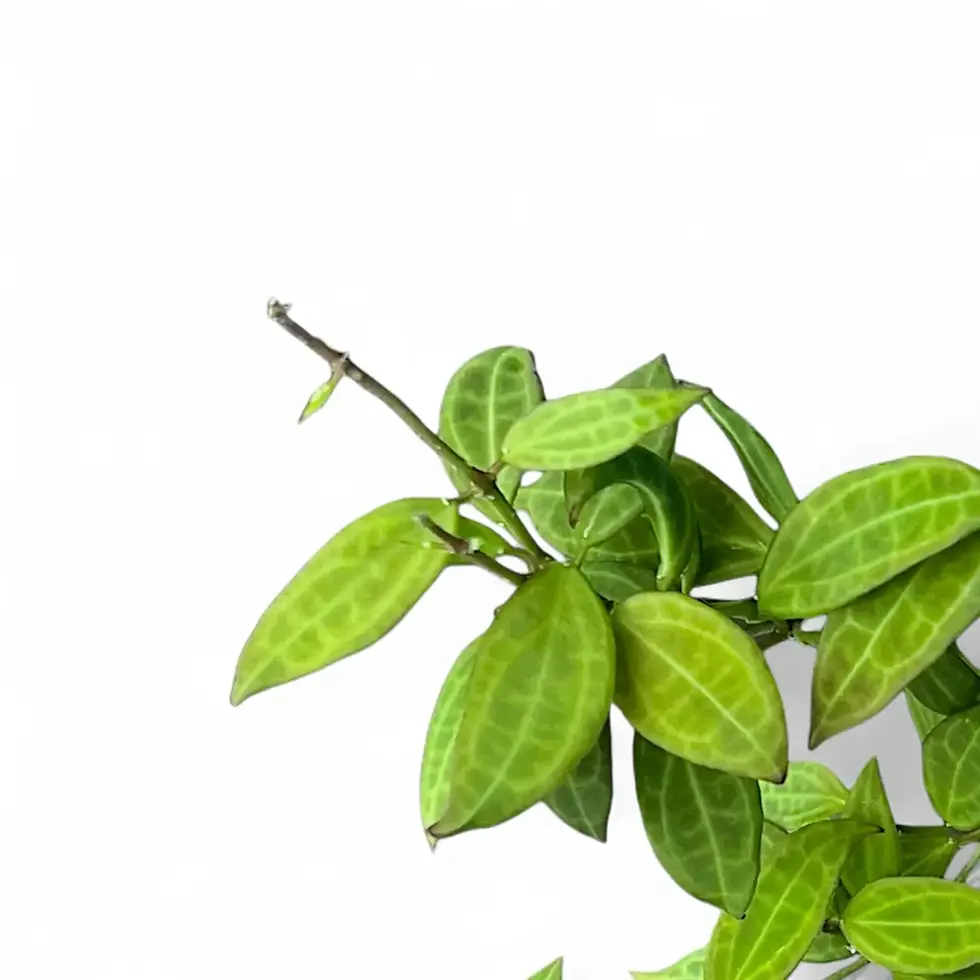Hoya sp. Thailand – Rare Paddle-Leafed Climber with Striking Venation
Hoya sp. Thailand is an undescribed tropical species native to Thailand, valued for its large, paddle-shaped leaves and strong, vining growth. This rare climbing Hoya from Thailand stands out with its bright green foliage and bold, high-contrast venation — a visual signature that makes it a favourite among collectors. Thick, rigid leaves give the plant a sculptural quality, while its ease of care makes it suitable for beginners and seasoned enthusiasts alike.
What Makes Hoya sp. Thailand Special
- Leaf Characteristics: Bright green, paddle-like leaves with raised, contrasting venation and a firm, structured texture.
- Growth Habit: Fast-growing climber or trailer. Perfect for trellises, moss poles, or letting cascade from hanging pots.
- Visual Impact: Mature leaves can grow large, offering bold texture and a lush, tropical look indoors.
- Botanical Rarity: An undocumented Hoya species, making it a unique and valuable addition to curated collections.
How to Care for Hoya sp. Thailand Indoors
This Hoya with paddle-shaped leaves thrives with consistent, minimal care. Here's how to keep it healthy:
- Light: Bright, indirect light is ideal. Tolerates some gentle morning sun. Avoid direct midday exposure, which may scorch leaves.
- Watering: Let the top 2–3 cm of substrate dry before watering again. Never allow the pot to sit in water.
- Humidity: Does well in average indoor humidity (40–60%). Benefits from higher humidity but doesn’t require it.
- Temperature: Keep between 18–26 °C. Protect from cold drafts and sudden changes.
- Soil: Use a chunky, well-draining mix (e.g. cactus soil with added perlite and orchid bark).
- Feeding: Apply a balanced liquid fertilizer every 4–6 weeks. No need to adjust between seasons — consistency is key.
Common Issues and Solutions
- Yellowing Leaves: Often due to overwatering or dense soil. Let soil dry slightly and improve aeration.
- Root Rot: Caused by excess moisture. Repot in a fresh, airy substrate and trim damaged roots.
- Spider Mites: Look for tiny webs and speckled leaves. Treat with neem oil or insecticidal soap and raise humidity.
- Mealybugs: Cottony clusters on stems or nodes. Remove manually and treat with systemic or contact-safe insecticides.
- Leaf Browning: Usually from too much sun or underwatering. Adjust placement and check watering routine.
Extra Tips to Support Strong Growth
- Support: Train the plant on a trellis or moss pole to encourage upward growth and better light exposure.
- Pruning: Trim back long or leggy growth to promote branching and fuller shape. Always use sterile tools.
- Propagation: Root stem cuttings in water or well-draining substrate. Allow cut ends to callous before planting.
Natural Habitat and Growing Insight
In the wild, this species likely grows epiphytically in shaded, humid forests across Thailand. Recreating those conditions indoors — warm temperatures, bright indirect light, and a fast-draining substrate — allows it to thrive long-term. It’s resilient, adaptable, and thrives in typical European home conditions when kept warm and dry at the roots.
Where the Name Comes From
The genus Hoya was named in honour of English botanist Thomas Hoy (c. 1750–1822), who cultivated tropical species in 18th-century glasshouses. Since this Hoya remains undescribed, it is provisionally known by its country of origin — Thailand — reflecting both its rarity and botanical mystery.
FAQs – Hoya sp. Thailand
- Is it easy to grow? Yes – it adapts well to indoor life and needs only moderate care.
- Will it flower indoors? It may bloom once mature, with fragrant cluster flowers typical of Hoyas. However, foliage is the main ornamental focus.
- Can I grow it in LECA? Yes. Hoya sp. Thailand responds well to semi-hydro setups like LECA, as long as humidity, warmth, and oxygen flow are maintained.
Bring Hoya sp. Thailand into Your Collection
Looking for a rare Hoya with bold leaf structure and reliable indoor growth? Hoya sp. Thailand delivers tropical form and collector value in one. Stock is limited — add it to your cart now and elevate your indoor jungle with this botanical gem.
Hoya sp. Thailand
Hoya sp. Thailand comes in a ⌀ 6 cm pot and is approximately 10–15 cm tall
































